The developers at Capcom that brought us the early hits were heavily influenced by pop culture. The movies, manga, and anime that they grew up with helped shape the creation of their games. One of the most influential manga, and anime shows that influenced the creation of Street Fighter (as well as World Heroes, and many other titles) was Hokuto no Ken (HNK), better known in the USA as Fist of the North Star. The manga issues were published by Shonen Jump from 1983-1988, it would be collected, and translated into multiple languages over the next 30+ years. It was so successful that it got a 109 episode TV series from 1984-1987, and an additional 43 episodes from 1987-1988. Not to mention an anime movie in 1986. It should not be understated how important that series was in shaping the tastes, and presentation of games coming out of Capcom.
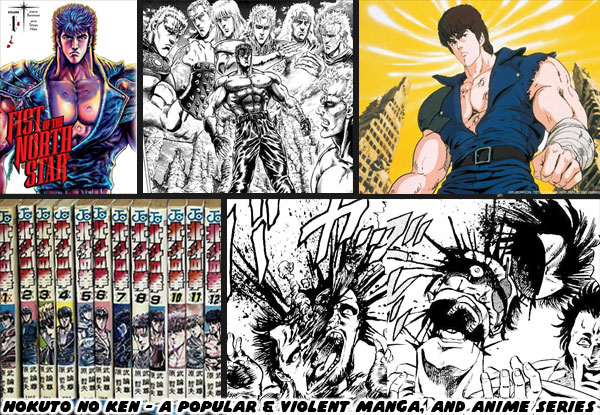
For those unfamiliar with HNK, it was a post-apocalyptic story that revolved around Kenshiro, the master of Hokuto Shinken. It was a fictional martial art that allowed practitioners to control the pressure points, or meridians of a person. Kenshiro wandered the wastes, righting wrongs with his bare hands. He could cause body parts to explode with a few touches. His victims, often marauding gang member had grisly deaths. Their arms, and legs would break backwards, heads would split open, with bones, and brain shooting in every possible direction. The violence in the series was very graphic, even with a lot of censorship, and selective edits the anime shows were almost as gory as the manga. The series was more than just violence, a very colorful cast of heroes, and villains were as memorable as the biggest comic book stars. Most of the characters influenced the designs coming from Japan, and the West for decades.
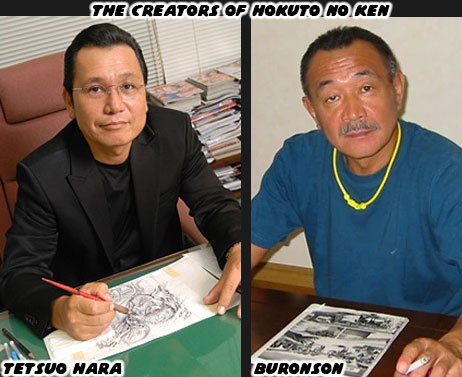
The series was illustrated by Tetsuo Hara, and written by Buronson. The duo didn’t just create a fantastic manga, they shaped pop culture for years to come. Hokuto no Ken ranked among the most successful properties ever created. As far as brands went it had generated some $22 billion in revenue. This was of course split across licensors, and not the creators themselves. The comics inspired many games over the years. I had
discussed Hokuto no Ken in the history of the brawler. There were even a few fighting games in the arcade, and home consoles based on HNK. The most successful franchises however were influenced by the series, rather than based on it. Nowhere else was this more apparent than with Capcom, and the development of Street Fighter.
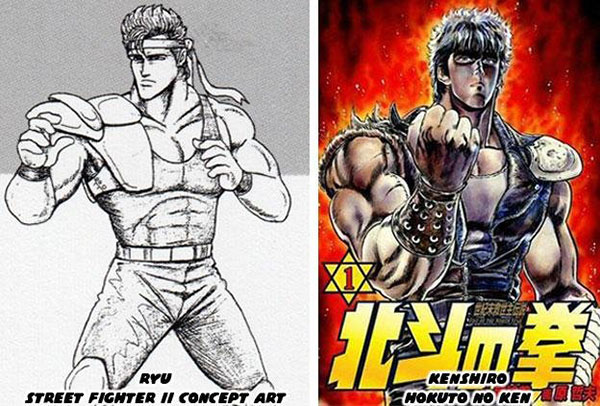
The first Street Fighter was inspired by the real world adventures of master karate fighters
Mas Oyama, and Yoshiji Soeno. The karate hero had a redesign for SFII, and had become more of an action star. Early concept art had Ryu ditch the karate gi for a costume more like Kenshiro’s. The similarities didn’t end there. The
giant characters in Hokuto no Ken influenced the creation of giants in the Street Fighter series. Even the villains like
Rolento was inspired by Colonel from HNK. Meaning the series had influenced the world of Street Fighter, and Final Fight through the ‘80s, and early ‘90s. Some of the influences were subtle, and others were very overt. Look at the official art for Vega / Dictator, he was posed just like Raoh, the ultimate rival to Kenshiro.
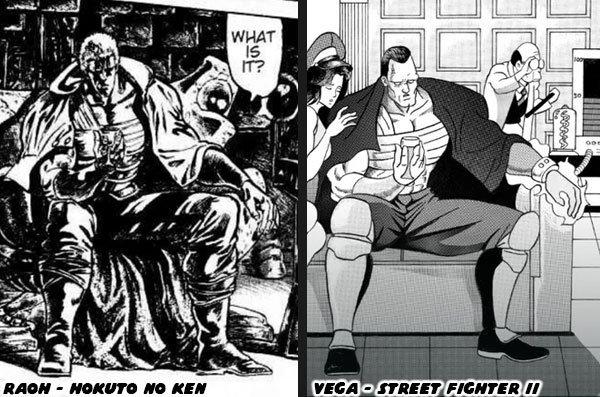
In 1991 Street Fighter II put the fighting genre on the map. Capcom couldn’t release updates to the game, and begin developing home ports fast enough. At the same time they wanted to strike while the market was hot. The publisher wanted expand their library of fighters, but without cutting into the success of SF. They were successful, and experienced with brawler games, but needed something that played more than a fighter. They were indebted to Tetsuo Hara for his influence on their biggest hits. They decided to work with him on a new project. The publisher looked at what might work in that format, but wouldn’t take people away from their hit. The wrestling game was an obvious solution, and Capcom owed Tetsuo Hara some work. They asked him to design the cast of characters. These fighters would be set in the shared universe of Street Fighter, and Final Fight. The game would be called Muscle Bomber (MB). It would spark the creation of a trilogy.
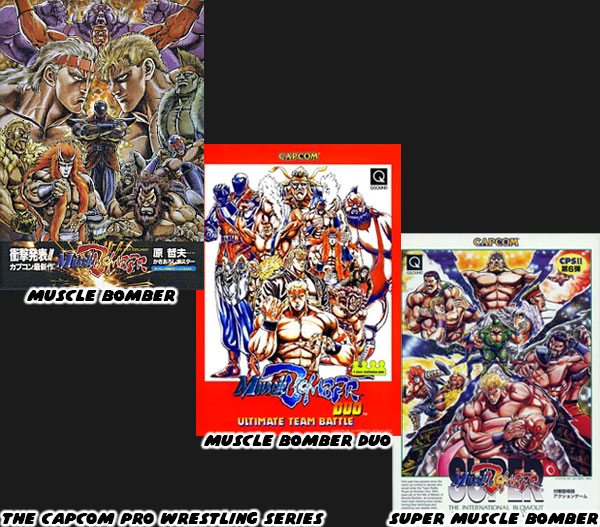
Muscle Bomber - The Body Explosion came out in 1993, Muscle Bomber Duo came out later that same year, and Super Muscle Bomber - The International Blowout debuted in 1994. Muscle Bomber Duo was an expansion to the original game, sort of like Turbo was for Street Fighter. Duo added tag team matches to the story of the original. The first two MB games in the series were not well known to many arcade visitors. The mix of wrestling, brawler, and fighting game moves didn’t capture the magic of Street Fighter. The third game in the series Super Muscle Bomber played more like a traditional fighting game. It was a rarely seen cabinet, and not really known to the majority of first generation SF fans. When the games were being brought over to the US the studio renamed it Saturday Night Slam Masters. This was most likely due to the popular late night WWF (WWE) show Saturday Night’s Main Event.
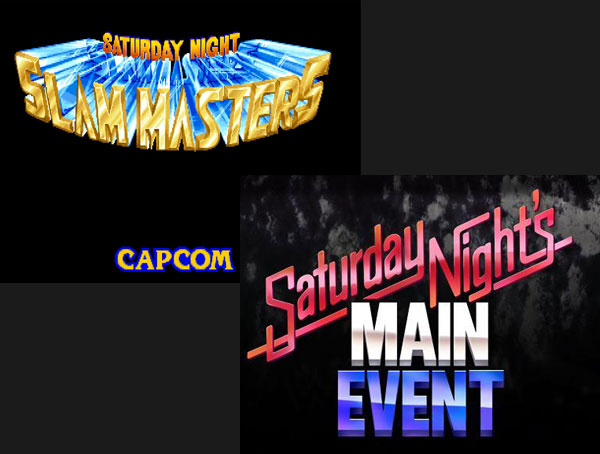
Capcom made sure to get the collaboration in front of as many gaming outlets as they good. All of the magazines, and even weekly manga anthologies made sure to write about the father of Hokuto no Ken creating a library of wrestlers for the Street Fighter universe. The stakes for this new franchise were pretty high after all. During development of SFII Capcom had more people working on designs than at any other point in time. Each employee poured their heart, and soul into a the fighters. Countless revisions were made in order to ensure that
The World Warriors were as strong as they could be. They built a following in the few years they were around. The challenge was whether or not Mr. Hara’s style worked for the genre, and if he could make anybody as memorable. Audiences were worried that his style of art, his character work had become dated. After HNK the artist worked on a feudal-era piece called
Hana no Keiji / The Flowery Keiji, between 1990 - 1993. It didn’t have the same impact as his previous series.
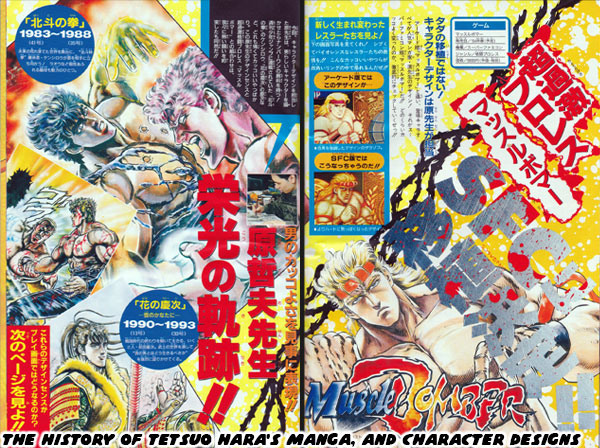
It turned out that Mr. Hara was more than up for the challenge. He let the various outlets know that he was a huge fan of pro wrestling. He wasn’t just familiar with the happenings in Japan, but also with international wrestlers as well. It was apparent that many of the villains in HNK were based on actual wrestlers. For example
King Heart was inspired in part on Abdullah the Butcher. This deep understanding translated to the game.
Sheep the Royal was based on Big Van Vader, and
Victor Ortega was inspired by ‘70s wrestling icons like Superstar Billy Graham, Jessie “the Body” Ventura, and Hulk Hogan. Fans of Mr. Hara’s work noticed that although his concept art was used in magazine articles, and the game cover, it was not seen in the actual game itself. All of his work was redone by the staff at Capcom, I think it was Kinu Nishimura in a number of portraits. I’m sure these changes disappointed Mr. Hara. I’d like to think there was a backlash for this change from fans, as well as some of the developers when the game was published. When the game was adapted for the Super Famicom / Super Nintendo, they made sure to go back to all of the original art.
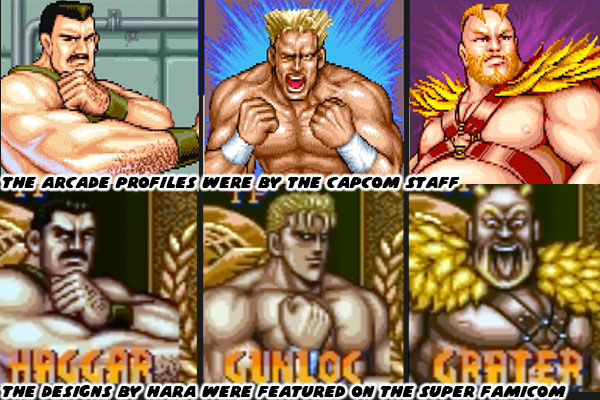
This was not to knock the Capcom art team. After all they had Akiman, SHOEI, Sensei, Bengus, and other icons. However the wrestlers that they presented were watered-down versions of what had been promised in previews. Mr. Hara stood out from his manga, and even US contemporaries, by creating hyper masculine figures. He predated, and influenced Karate Apocalypse, Berserk, JoJo’s Bizarre Adventure, Grappler Baki, and Toriko to name a few. His heroes, and villains were not only strong, they had bodybuilder physiques. They were far more swollen than any other heroes on the market. It was no where more apparent than with the introduction of Victor Ortega, the first Capcom Wrestling Association (CWA) champion. He was featured in the intro animation.
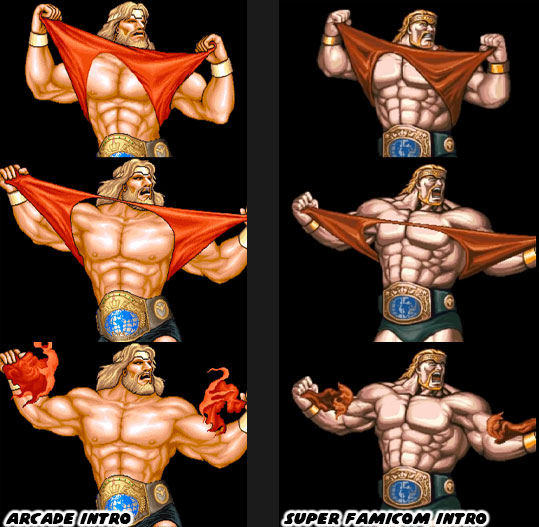
In the arcade he was strong, but not absurdly huge. The original arcade intro version of Victor seemed anemic compared to what Mr. Hara had designed. The studio not only returned the original character profiles from Mr. Hara in the Super Famicom version. They also redid the intro animation to match Mr. Hara’s vision. The story, and characters of Muscle Bomber were fleshed out by Mr. Hara, and Capcom in far greater detail than either Final Fight or Street Fighter. Audiences wouldn’t know the full story until the game hit home consoles. We will dig into this in the next blog. Did you ever play this game? Were you a fan of the series, or pro wrestling? I’d like to hear about it in the comments section. As always if you would like to sponsor me
please visit my Patreon page and consider donating each month, even as little as $1 would help make better blogs and even podcasts!


















No comments:
Post a Comment